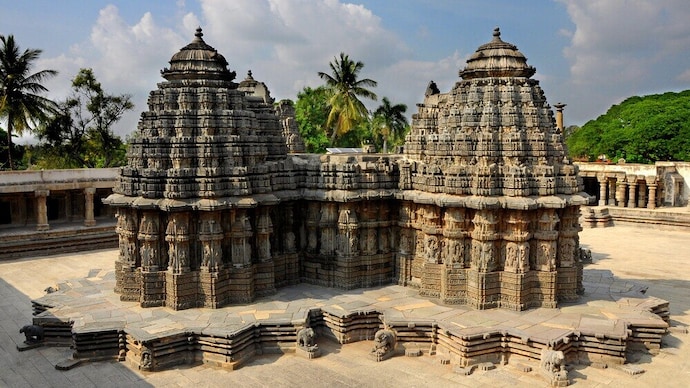Amidst the captivating landscapes of Karnataka, the Hoysala temples, nestled in the regions of Belur, Halebidu, and Somananthpura, have earned a prestigious accolade as they make their grand entrance onto the UNESCO World Heritage list. The exciting announcement was unveiled through UNESCO’s official platform, Twitter, on a momentous Monday. These remarkable temples, collectively referred to as the ‘Sacred Ensembles of the Hoysala,’ have been the subject of eager anticipation since earning a coveted place on UNESCO’s tentative list in April 2014.

Source: India Today
In January 2022, India made a significant stride towards securing UNESCO World Heritage status for the Hoysala temples, nominating them for consideration in the 2022-23 cycle. These architectural marvels, dating back to the 12th and 13th centuries, serve as profound testaments to the artistic brilliance and architectural finesse of the Hoysala era. This empire, which reigned over a substantial expanse of present-day Karnataka from the 10th to the 14th centuries, found its initial capital in Belur before later relocating to Halebidu.
The Hoysala temples encapsulate the rich heritage and cultural legacy of this empire, showcasing an extraordinary blend of intricate craftsmanship and spiritual significance that has transcended centuries.
The Hoysala temples, known for their distinctive architectural character, exhibit a foundational Dravidian structure while being notably influenced by various architectural styles prevalent in different regions of India. These influences encompass the Bhumija mode, commonly seen in central India, as well as the Nagara traditions from the northern and western parts of the country.

Source: India Today
Additionally, the Karnata Dravida mode, a preference of the Kalyani Chalukyas, also left a profound mark on these temples. Architects of this era, drawing inspiration from this diverse array of temple designs, ingeniously forged a completely original architectural form known as the ‘Hoysala Temple,’ which stands as a testament to their creativity and innovative spirit.
UNESCO’s official website has provided a comprehensive insight into the distinguishing features of the Hoysala temples that led to their well-deserved recognition as World Heritage Sites. These sacred shrines are distinguished by their remarkable attributes, including hyper-realistic sculptures and intricate stone carvings adorning every facet of their architectural design. They boast a circumambulatory platform, a grandiose sculptural gallery, a multi-tiered frieze, and notable depictions of the legendary Sala.

Source : Jagran Josh
The Prime Minister of India, Narendra Modi, responded enthusiastically to this momentous achievement, underscoring the enduring allure and meticulous craftsmanship embodied by the Hoysala temples. He emphasized that these temples serve as enduring testaments to India’s rich cultural legacy and the extraordinary artistry of our forebears, encapsulating a timeless beauty that continues to captivate admirers from around the world.
On Sunday, it was announced that West Bengal’s Santiniketan has been inscribed on the UNESCO World Heritage List. Santiniketan is a landmark site known for being the place where Rabindranath Tagore built Visva-Bharati over a century ago.



















































































